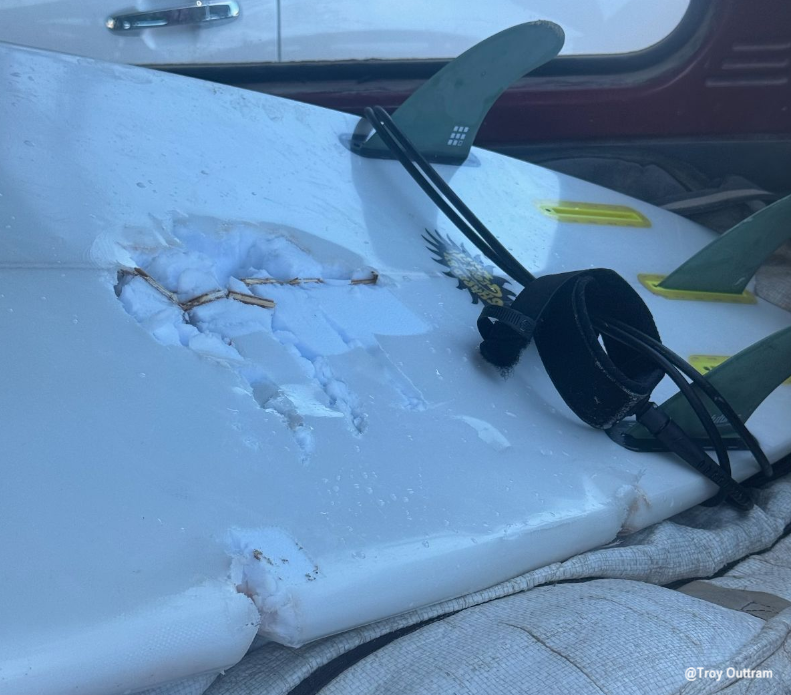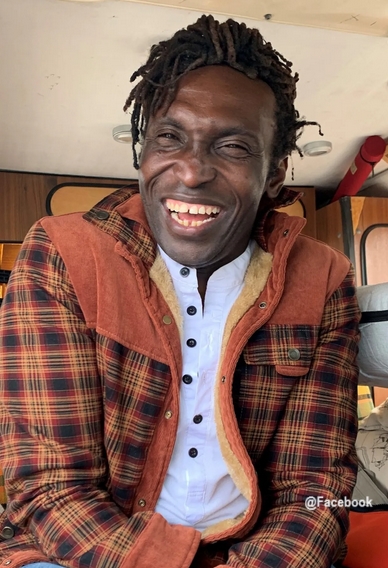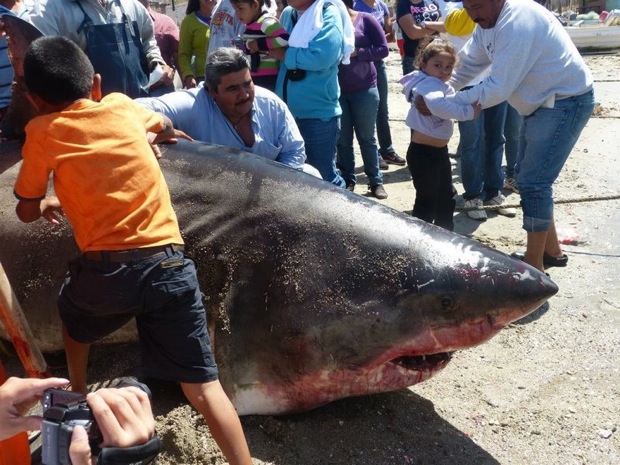Welcome to our interview with shark photographer George T. Probst, Part 2. If you missed part 1, it’s available here. We pick up with a question at Guadalupe Mexico, a favorite white shark hangout where Mr. Probst has taken some awesome photos.
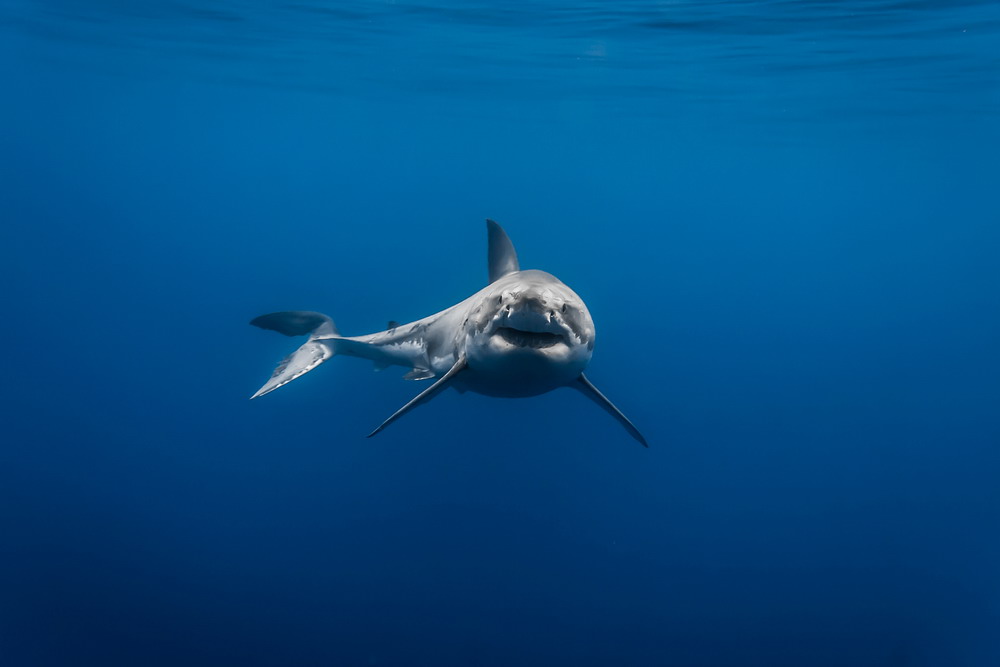
Guadalupe seems to be the go-to place in North America to film white sharks. How much does it cost, and who do you go with?
A 5-day trip, which includes 3 days of diving, usually starts at around $3,000 USD, not including tax or tip. The particular dive company that I travel with (Solmar V via Great White Adventures) meets up in San Diego and takes a bus to Ensenada Mexico to board the boat. The bus trip is included in the cost. It takes around 20 hours of boat travel from Ensenada to Guadalupe. The first and last days aboard the boat are travel days. The trip is a live-aboard situation, so the only time you’re not on the boat is when you’re diving. The island itself is off-limits.
Not a bad price for a once in a lifetime experience. What is the most exhilarating part of the dive for you and what is your favorite part of the dive?
When multiple sharks are around or if a particular individual that I’m familiar with shows up, those situations are always exhilarating for me. I love seeing sharks that I’ve encountered multiple times over the years. When there are several sharks around, my heart rate is usually racing, because you want to be able to direct your attention to each shark, but you’re too busy looking all around trying to catch a glimpse of each one. The most white sharks I’ve had close by at once was seven, and it was so crazy trying to keep track of them all. Anytime there are more than two around, it’s very difficult to maintain focus.
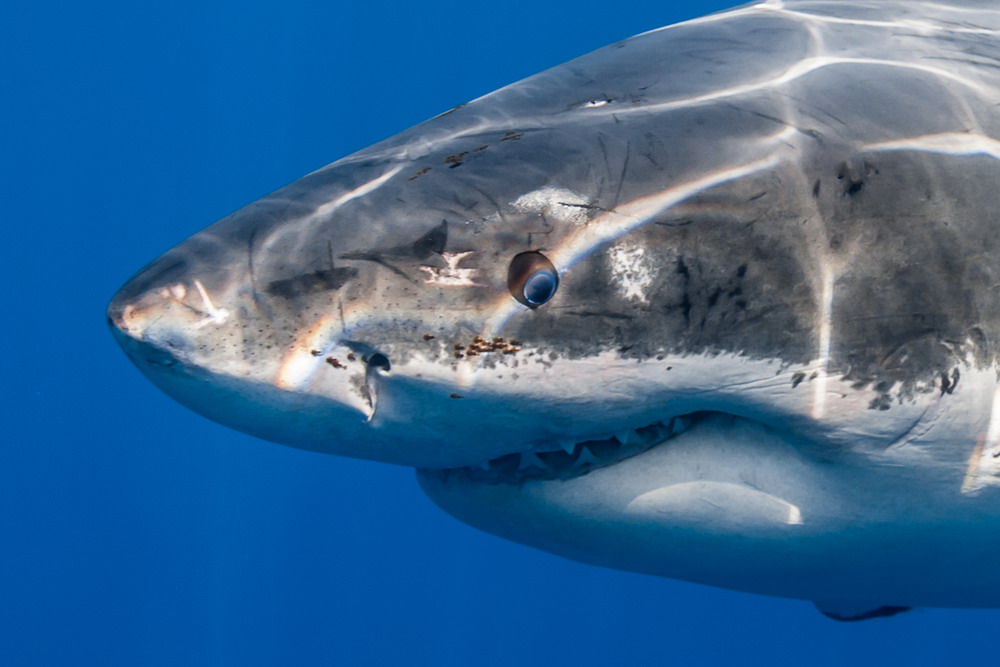
I love it when there is a curious shark around and he/she is coming in close to check things out. When they get close enough, you can see the detail in their eyes, and you can actually tell which direction they are looking. They have a beautiful blue iris, and when that blue iris locks with your eyes, it’s a really cool feeling.
Locking eyes with a great white shark has to be a life changing moment. Not to mention seeing seven great white sharks at one time; that is straight up awesome. What a dream dive! I bet it would be hard to keep focus, especially when you have to decide which shark to photographer.
What type of camera would you recommend for a beginner?
GoPro seems to be the choice of most people, as best I can tell. I started with a small Sony point-and-shoot back in 2006. The drawback of that camera and GoPro is that neither offer the option to shoot in RAW format, so you can’t correct your white balance quite as easily.
You have some absolutely stunning photos. I recognized several of your photos in news articles, have you sold many?
I only have a few of my old photos available for commercial license, so most of the instances in which my photos have been published are not really a case of them being “sold,” with the exception of those older shots. I generally grant permission for my photos to be used in situations that are conservation related. My photos have been featured by national and international media outlets including CBS News, USA Today, Yahoo!, and MTV Networks to name a few. I’ve also donated images to help promote ocean conservation efforts to nonprofit groups including Oceana, Marine Conservation Science Institute, Sharks 4 Kids and Bite Back.
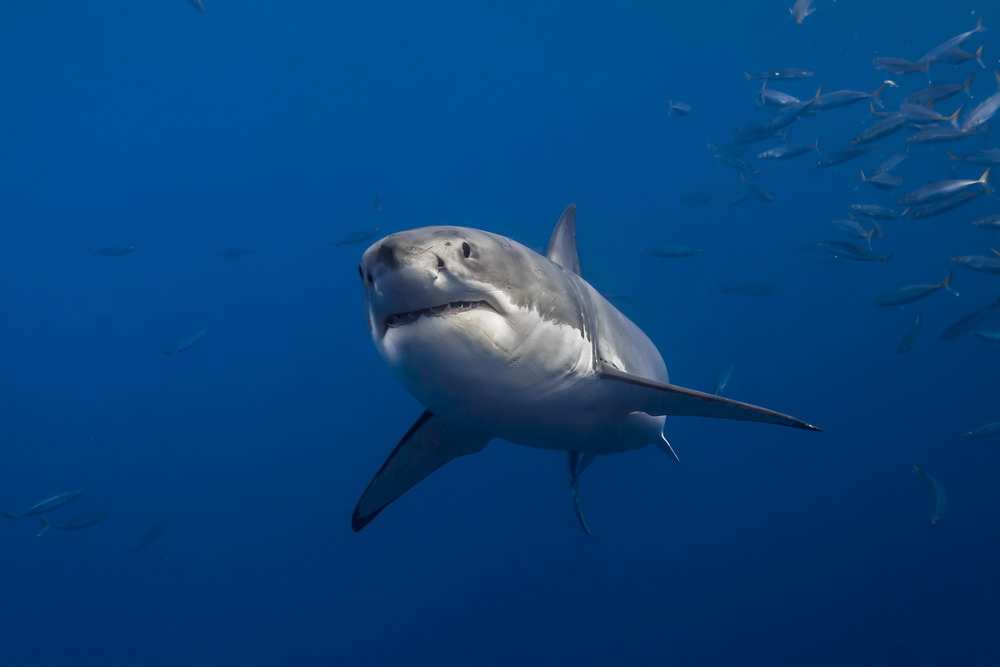
It’s great to see the positive image of sharks portrayed through your work, and kudos for supporting shark conservation programs. We actually have one of your photos as our Facebook and Twitter backgrounds. What should people take away from your photos?
I hope that my photos reflect a broader and more accurate representation of white sharks. At the end of the day, I hope to not only share the physical beauty of these animals but also to educate those who might not know much about them.
In your opinion, what is the biggest threat to sharks? And what would you suggest shark lovers do to save sharks?
Overfishing, in general. Many shark species have a slow maturation rate and are being removed from the oceans at rate faster than they can replenish their numbers.
There are lots of ways to help not only sharks but all marine wildlife. Avoiding purchasing products derived from sharks is a no-brainer. Letting your voice be heard to those who decide on laws and policy regarding protecting the oceans and the environment is one way. Supporting marine conservation organizations, whether it be through your time, talents, or financially can also help. Even simple things such as picking up trash along beaches and waterways can ultimately make a difference for the better.
Well said. Before we finish up, I have to ask what is your favorite shark movie and why?
The original Jaws, but certainly not because it’s a realistic depiction of shark behavior. It’s a great character-driven tale centered around an unrealistic shark that happens to be a serial killer.
You mentioned the serial killer shark, why do you think sharks are so misunderstood?
I think it largely has to do with the fact that the only time most people hear or see anything about sharks it’s related to attacks. Most people don’t know much about sharks and don’t have the opportunity to see them or spend any time around them, so it’s understandable that there would be a level of fear associated with them, if all they know is what they’ve seen in movies or in news reports of attacks
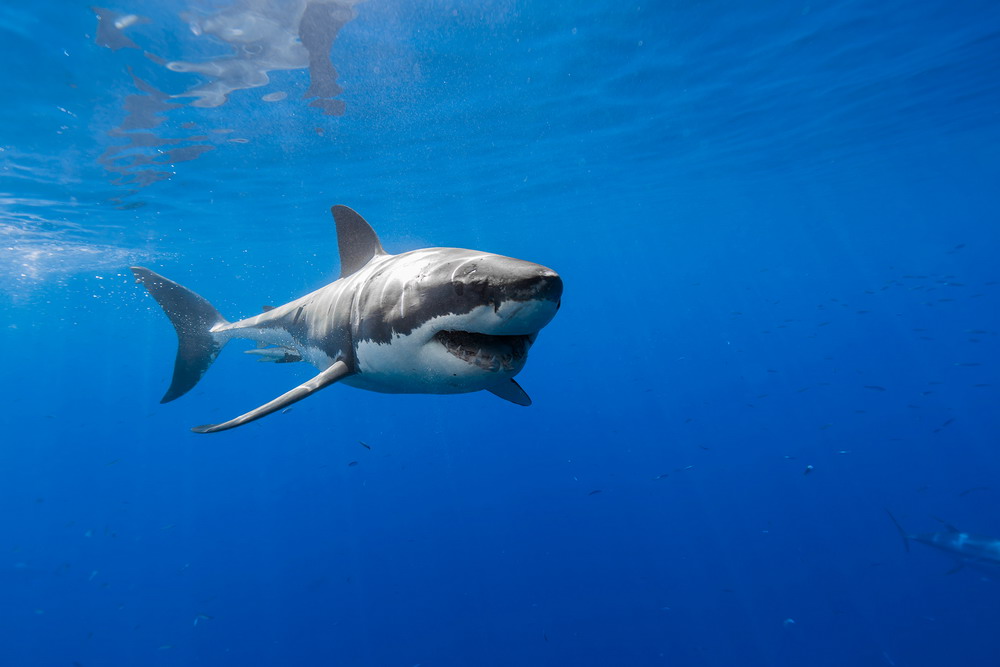
You make valid point. What would you like reader to take away from out interview today?
I always like to stress that while sharks are not “out to get” people, they are still wild animals that need to be treated with respect. Wild, predatory animals have the potential to be dangerous, and one needs to be mindful of this when interacting with them.
It’s important to remember that sharks have been around for millions of years and play a vital role in maintaining balance in our oceans. At the end of the day, the planet needs healthy oceans, and healthy oceans need healthy sharks.
Tracking Sharks would like to give big fins up to Mr. Probst for taking the time to share his photos and time with us. Be sure to check out his website sharkpix.com and follow him on Twitter @georgeprobst
